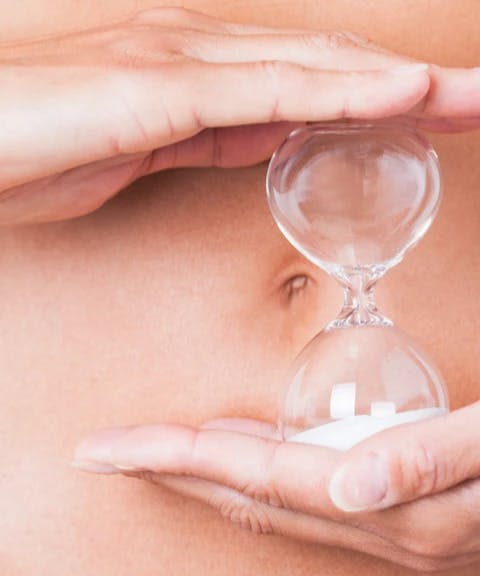The Female Fertility Clock: What We Should Know About Our Bodies
More and more women are choosing to focus on their career in their twenties and thirties, leaving behind biologically ideal timelines for conceiving children.

If you are past the peak of child-bearing years, you may wonder just how many eggs you have left in your fertility basket. Here are some statistics and options to keep in mind if you are planning on having children one day.
How Many Eggs Are There?
At birth, women carry all the eggs they will ever have in their lifetime, which is about 2 million, with 11,000 dying every month prior to puberty. Around age 30, women have only 12% of their ovarian follicular cells left, which develop into eggs. After 30, a woman has a 20% chance of getting pregnant per menstrual cycle, and by the time she reaches 40, she has a 5% chance of bearing children.
After 30, a woman has a 20% chance of getting pregnant per menstrual cycle, and by the time she reaches 40, she has a 5% chance of bearing children.
Just as the old adage goes, "Quality over quantity." The egg count is not the end-all-be-all; it is the quality of eggs that are the most important in determining a woman's chance of conception. Ovulating a healthy egg every cycle is better predictor of a healthy pregnancy and a healthy baby than having many eggs left. Taking certain supplements, like CoQ10 and other antioxidants, for three to four months before trying to conceive can improve egg quality.
Dr. Marie Savard, author of Ask Dr. Marie: What Women Must Know about Hormones, Libido, and the Medical Problems No One Talks About, says, "the biological clock does tick," and advised women who want kids, "the sooner, the better."
Here Are the Different Tests To Consider
Fortunately, there are many new tests that can evaluate your egg health and determine the likelihood of entering into beautiful motherhood.
Ovarian Reserve Tests: ORTs are the first step in determining success in achieving pregnancy. These tests are given to subfertile women as a baseline to determine their ovarian count and response before In-Vitro Fertilization (IVF). The most common tests include a basal follicle-stimulating hormone, an anti-Mullerian hormone, and antral follicle count. ORTs are important for IVF because IVF needs many eggs to increase it's chances of success.
Hormone testing: Measures the level of ovulatory hormones and pituitary hormones, along with the Follicle-stimulating hormone, which controls your menstrual cycle and egg production.
Estradiol Test: A blood test that measures estradiol, a hormone found in your blood. Estradiol is a form of estrogen which is found in the ovaries, placenta, and adrenal cortex which is responsible for feeding a developing fetus.
25-Hydroxy Vitamin D Test: A blood test that measures Calcidiol, our main form of stored vitamin D, which is responsible for maintaining skeletal and metabolic health.
Imaging tests: Pelvic ultrasounds that look for uterine and ovarian issues. Sonohysterograms can also be used to assess any issues further inside the uterus that typical ultrasounds don't pick up.
Closing Thoughts
As more women choose to focus on their careers over starting families, their ability to conceive (after 30) consequently dwindles. This shouldn't anger us, but rather empower us to make more informed decisions. It's becoming the norm that as traditional gender roles are challenged daily, important biological realities are being excluded from the conversation.
However, there are many women who have healthy children well into their thirties and early forties. With advancements in modern medicine, having healthy babies after 35 may even become more common.